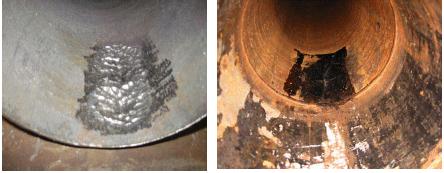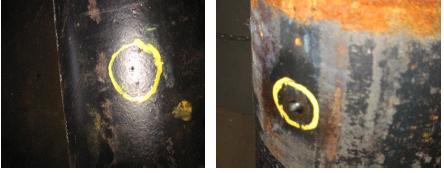Use of Pressure-Activated Sealant Technology to Cure Pipeline Leaks
Project Number
DE-FC26-03NT41858
Goal
The goal is to help maintain the nation's natural gas transmission infrastructure through development of a new, efficient, cost-effective method for internally sealing natural gas pipeline leaks through the application of differential pressure-activated sealants.
Performer(s)
Seal-Tite, LLC – project management and research products
Location:
Madisonville, Louisiana 70447
Background
Seal-Tite LLC provides engineered sealing solutions utilizing a proprietary pressure activated sealant technology. This technology has been successfully and commercially applied in the oil and gas industry for seven years as well as in offshore gathering lines and in pipeline applications for leak repair in South America. The sealing process has the potential of effecting internal repair of pipeline leaks without the need for excavation and without taking the line out of service to replace defective sections. There is potential to use existing leak data as a benchmark to develop new sealant formulas and procedures to be used to conduct leak sealant operations in the laboratory on simulated pipeline leaks similar to typical pipeline leaks and to perform leak sealant operations on selected in-service pipelines.
Using an enhanced pressure activated sealant technology and new procedures applicable to the internal repair of pipeline leaks, the proposed project seeks to develop new technology to cure pipeline leaks. The benefits realized by development of this technology include repair of pipeline leaks without a need to excavate, significant reduction in pipeline downtime, elimination of environmental problems caused by pipeline leakage and excavation, and significant reduction in the cost of pipeline leak repairs.
Internal corrosion defect - bare Internal corrosion defect with flex-plug

Results of differential pressure activated sealant repairs

External view of pipe before flex-plug External view of pipe with flex-plug extrusion
Impact
The opportunity to effectively repair pipeline leaks (while still permitting future pipeline cleaning and inspection) using an internal method offers the potential opportunity to reduce the costs associated with pipeline excavation and repair and to reduce the amount of natural gas pipeline product lost to the environment through repairable leaks. Such technologies could potentially impact the overall integrity and safety of the pipeline system and enhance the reliability of natural gas delivery by effectively and efficiently sealing anomalies within the pipeline system caused by things such as corrosion or stress corrosion cracking.
Accomplishments (most recent listed first)
- Completed an assessment of the state-of-the-art for gas pipeline sealing technologies and concluded that pressure-activated sealants would provide a cost effective alternative to existing repair options
- Completed an analysis of field data over a 13-year period and identified 205 leaks out of 1,084 that would have been candidates for pressure-activated sealant technology
- Constructed an experimental pipe run for testing sealants and sealant delivery methods
- Completed lab scale comparison of existing sealant formulas and delivery methods to the applicable leak types
- Completed modification of sealant formulas to more effectively seal pipeline leaks
- Completed testing of modified sealant formulas and delivery methods in lab scale pipeline to confirm ability to effectively seal leaks caused by different damage mechanisms
- Conducted lab scale testing of sealant formulas to determine ability of leak seals to withstand future cleaning/pigging operations
- Evaluated the effects of variation in sealant curing times and pressures on ability of sealant to withstand pigging operations
- Demonstrated that several sealant formulas could effectively seal, back to operating pressures, leaks caused by internal corrosion, external corrosion, and weld defects if differential pressure was at least 200 psi
- Demonstrated limited ability of leak seal to withstand pigging operations under certain pressure conditions and leak types (internal leak seals most resistant to pigging)
In summary, pressure activated sealant technology can be considered a viable option for pipeline leak repairs under the right circumstances of pressure, leak type, and pigging requirements, with the optimum chance of long-term sealant success in pipelines which exhibit relatively high differential pressure and are not subjected to a rigorous pigging program. The field testing phase was excluded to allow more time for laboratory testing. It was felt that additional lab testing utilizing field-scale equipment would provide equivalent data.
Current Status
and Remaining Tasks:
All work under this project has been completed. Results indicate potential for successful internal leak repair of pipelines using the technology in lines with a minimum 200 psi differential pressure. The technology showed more limited success in developing a seal capable of withstanding rigorous pipeline pigging following the repair.





